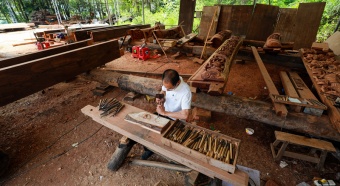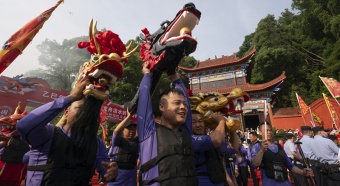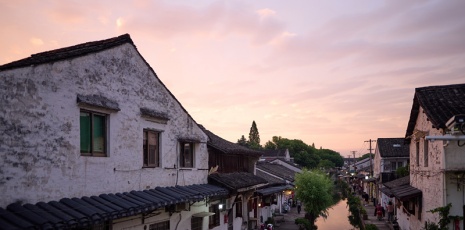Beijing, May 3(China Youth) Dean of China Region Development & Reform Institute (CRDRI),chief editor of The National Think Tank, director of the Think Tank Industry Research Center of the Shanghai University Yu Jin attended the Global Think Summit 2017. During the summit, he made a speech and talked about the Belt and Road Initiative and the related infrastructure construction.
On 14th to 15th this month, President Xi Jinping of China will host the Belt and Road Forum for international cooperation (BRF) in Beijing. 28 heads of state and government, as well as UN secretary-general Antonio Guterres, and representatives from 110 countries and 61 international organizations will attend the forum. This forum aims to discuss ways to boost cooperation, build cooperation platforms and share cooperation outcomes. It is at a critical juncture of making all-round progress. The forum will be a good occasion to review past progress, show early harvest outcomes and plan ahead.
In the fall of 2013, Chinese government put forward the Belt and Road Initiative to enhance synergy of development strategies and promote common progress of participating countries through closer international cooperation. It should be stressed that the Belt and Road Initiative is based on the international and regional cooperation and not China’s geopolitical strategy. To view the Belt and Road Initiative as a geopolitical strategy will lead to prejudice and misunderstanding inevitably.
In Asia, Infrastructure Investment is a very crucial factor that facilitates economic development and social stability. However, Asia needs to invest $1.7 trillion to resolve a serious infrastructure shortage every year. The launching and expansion of the Belt and Road Initiative, especially the Asian Infrastructure Investment Bank (AIIB) and Silk Road Fund providing firm support to financial cooperation, is conducive to Eurasia’s regional development and world economy.
With regard to the fruitful outcomes of the Belt and Road Initiative, in terms of transportation, it involves the relevant infrastructure of three continents: Europe, Asia and Africa. It not only contains railways, highways and other land transport, but also is related to sea and air traffic. With regard to health care, it involves the establishment and upgrading of medical facilities in the countries along the Belt and Road. Besides, coordinating regional development is also included. To sum it up, during the process of planning and implementation of the Belt and Road Initiative, infrastructure construction plays an active and effective role.
Take China Communication Construction Company (CCCC) as an example. It plays an exemplary role in infrastructure construction. Yu Jin has shared the following truth with the people: “The person in charge told me that the company is using the whole industry chain, which is an important symbol of participating the Belt and Road Initiative actively. That is, many projects of the company have characteristics of comprehensive development and project clustering, and form the layout: a port as a node and industrial agglomeration, which embodies the oriental wisdom. This is known as PILC, P stands for Port, I Industry, L Logistics, and C City. ”
This case shows that during the implementation process, Chinese companies conform to the basic aim of the initiative set by the government, which is to promote the common development of China and countries along the Belt and Road. What is more important is that, this case also highlights the key points that differentiate the Belt and Road Initiative from other plans, such as Marshall Plan and foreign aid. The common development means promoting the development and upgrading of relative industries in the countries along the Belt and Road. It is “teaching a man how to fish”, rather than “giving a man a fish”.
Another example is China’s Railway Express trains to Europe. It has been operating on the vast Eurasian continent since 2011. It brought high-quality agricultural goods from Poland to many Chinese, including apples, milk, honey, etc. The goods already occupy a considerable size of Chinese market, which is beneficial both to China and Poland. Yu Jin thinks that these products have good quality and are worth buying. The trains connect China and many European countries including Poland. There are two significant benefits. First, this is a perfection of the existing logistics system on the Eurasian continent, which is important for matching the market needs of countries along the route. Second, the trains have also set up a bridge of communication and friendship between countries along the route.
The cases mentioned before shows that the infrastructure construction related to the Belt and Road Initiative is a proposition for China's common development with countries along the Belt and Road, and is also an effective deployment of China's participation in global governance. There are some countries in history that used infrastructure construction to promote the implementation of geopolitical strategy, China's the Belt and Road Initiative is essentially different. For example, in the early 20th century in Northeast China, there was the Middle East Railway built by Tsarist Russia. This railroad used Russian broad gauge, rather than the standard gauge used in the Qing dynasty, which means that it was difficult for Chinese trains to use this railroad. It is clear that this railroad was intended to serve the Tsarist Russia's geopolitical strategy in the Far East.
The above three cases confirm Yu Jin’s idea that Belt and Road Initiative is not China's geopolitical strategy at the beginning of this speech. Therefore, it is questionable to use the doctrine of geopolitics to analyze China's Belt and Road Initiative, or even use this as a starting point and deem the Belt and Road Initiative as a threat from China.
Seeing from the above analysis, the promotion and implementation of the Belt and Road Initiative not only benefits China and the countries along the Belt and Road, but also is conducive to the market and the public, and the Belt and Road Initiative (including infrastructure construction) is China’s contribution to peaceful development in Europe, Asia and Africa. Infrastructure construction is also an important pillar of the Belt and Road Initiative.
Yu Jin hoped that through the introduction of infrastructure construction under the Belt and Road Initiative, people can understand China's the Belt and Road Initiative more objectively, comprehensively and rationally. At the same time, he made an initiative: to develop effective international think tank cooperation and to strengthen our dialogue and coordination on the issues related to global governance, including the Belt and Road Initiative.
Yu Jun said he will reiterate President Xi’s suggestions at the World Economic Forum in Davos in 2017.
First, develop a dynamic, innovation-driven growth model. The fundamental issue plaguing the global economy is the lack of driving force for growth.
Second, pursue a well-coordinated and inter-connected approach to develop a model of open and win-win cooperation.
Third, develop a model of fair and equitable governance in keeping with the trend of the times.?
Fourth, develop a balanced, equitable and inclusive development model. As the Chinese saying goes, “A just cause should be pursued for common good.”
These four requirements ask people think tanks to carry out the comprehensive international cooperation. Think tank is an important source of innovation and international collaboration of think tanks will promote the integration of innovation, which is an important foundation to promote a rational model of governance in the world and can help us to establish a balanced development model.
At last, Yu Jin came up with the following proposals:
First, to improve the existing think tank cooperation mechanism, especially the holding of annual meeting.
Second, to facilitate the role of think tank as a platform for public diplomacy, and further enhance the effective cooperation between think tanks.
Third, to provide a reliable platform for communications and exchanges between foreign think tanks and Chinese think tanks.( Translator: Zhuoxiang Yang )

First Page >> Right Now >> Text








